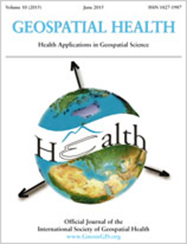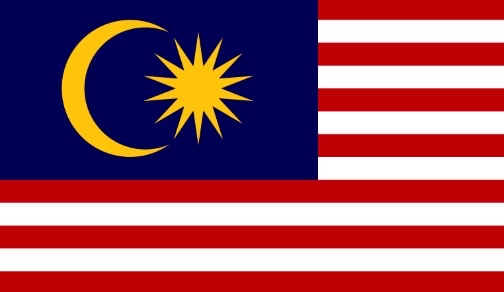Spatio-temporal evaluation of cattle trade in Sweden: description of a grid network visualization technique
Published: 1 November 2010
Abstract Views: 1266
PDF: 981
Publisher's note
All claims expressed in this article are solely those of the authors and do not necessarily represent those of their affiliated organizations, or those of the publisher, the editors and the reviewers. Any product that may be evaluated in this article or claim that may be made by its manufacturer is not guaranteed or endorsed by the publisher.
All claims expressed in this article are solely those of the authors and do not necessarily represent those of their affiliated organizations, or those of the publisher, the editors and the reviewers. Any product that may be evaluated in this article or claim that may be made by its manufacturer is not guaranteed or endorsed by the publisher.
Similar Articles
- Mai Liu, Yin Zhang, Impact of climate change on dengue fever: a bibliometric analysis , Geospatial Health: Vol. 20 No. 1 (2025)
- Sarah Isnan, Ahmad Fikri bin Abdullah, Abdul Rashid Shariff, Iskandar Ishak, Sharifah Norkhadijah Syed Ismail, Maheshwara Rao Appanan, Moran’s I and Geary’s C: investigation of the effects of spatial weight matrices for assessing the distribution of infectious diseases , Geospatial Health: Vol. 20 No. 1 (2025)
- Rubén Solano, Diana Gòmez-Barroso, Fernando Simòn, Sarah Lafuente, Pere Simòn, Cristina Rius, Pilar Gorrindo, Diana Toledo, Joan A. Caylá, Retrospective space-time cluster analysis of whooping cough re-emergence in Barcelona, Spain, 2000-2011 , Geospatial Health: Vol. 8 No. 2 (2014)
- André T. J. Alves, Flávio F. Nobre, The acquired immunodeficiency syndrome in the State of Rio de Janeiro, Brazil: a spatio-temporal analysis of cases reported in the period 2001-2010 , Geospatial Health: Vol. 8 No. 2 (2014)
- Naoko Nihei, Osamu Komagata, Kan-ichiro Mochizuki, Mutsuo Kobayashi, Geospatial analysis of invasion of the Asian tiger mosquito Aedes albopictus: competition with Aedes japonicus japonicus in its northern limit area in Japan , Geospatial Health: Vol. 8 No. 2 (2014)
- Cristina Ballart, Irene Guerrero, Xavier Castells, Sergio Baròn, Soledad Castillejo, M. Magdalena Alcover, Montserrat Portús, Montserrat Gállego, Importance of individual analysis of environmental and climatic factors affecting the density of Leishmania vectors living in the same geographical area: the example of Phlebotomus ariasi and P. perniciosus in northeast Spain , Geospatial Health: Vol. 8 No. 2 (2014)
- Ahmed Seid, Endalamaw Gadisa, Teshome Tsegaw, Adugna Abera, Aklilu Teshome, Abate Mulugeta, Merce Herrero, Daniel Argaw, Alvar Jorge, Asnakew Kebede, Abraham Aseffa, Risk map for cutaneous leishmaniasis in Ethiopia based on environmental factors as revealed by geographical information systems and statistics , Geospatial Health: Vol. 8 No. 2 (2014)
- Zhao Chen, Liang Shi, Xiao-Nong Zhou, Zhi-Gui Xia, Robert Bergquist, Qing-Wu Jiang, Elimination of malaria due to Plasmodium vivax in central part of the People's Republic of China: analysis and prediction based on modelling , Geospatial Health: Vol. 9 No. 1 (2014)
- Marcos C. Ferreira, Geographical distribution of the association between El Niño South Oscillation and dengue fever in the Americas: a continental analysis using geographical information system-based techniques , Geospatial Health: Vol. 9 No. 1 (2014)
- Nicolas M. Oreskovic, Jeff Blossom, Alyssa I. Robinson, Minghua L. Chen, Doris K. Uscanga, Jason A. Mendoza, The influence of the built environment on outcomes from a walking school bus study: a cross-sectional analysis using geographical information systems , Geospatial Health: Vol. 9 No. 1 (2014)
You may also start an advanced similarity search for this article.











